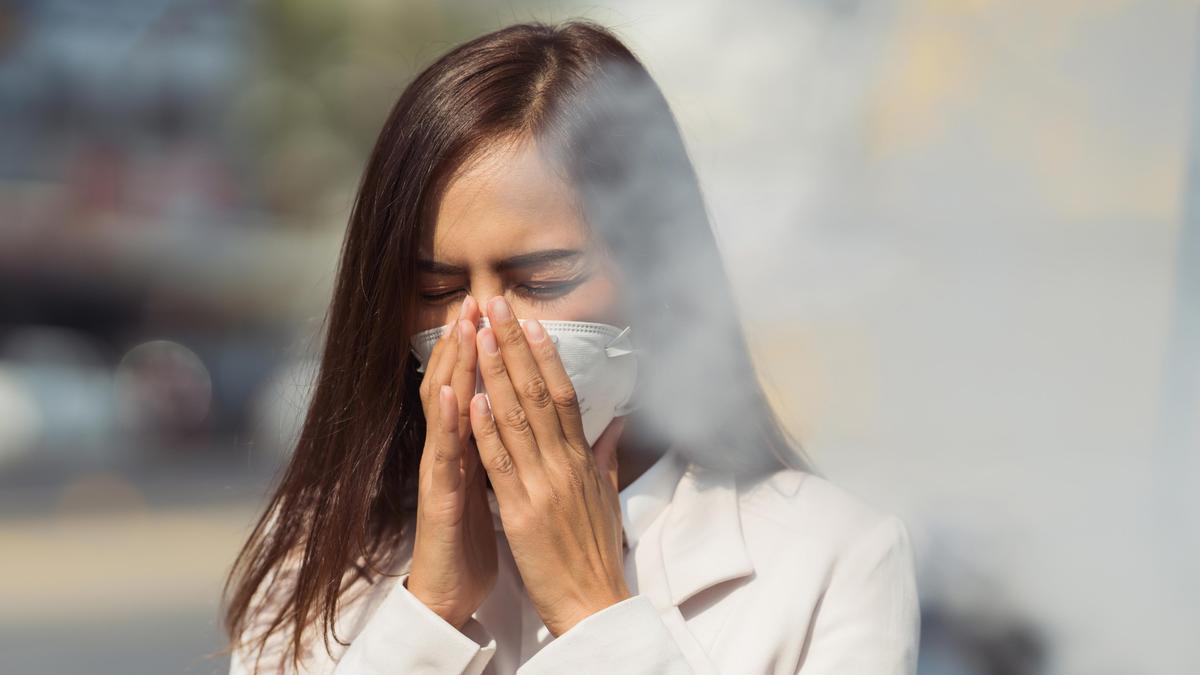Humidity, indoor microbes and temperature swings are changing how respiratory infections spread: experts

A growing body of research now shows that humidity and rapid temperature shifts can disrupt the respiratory tract’s natural defence system far more than previously understood, altering the way viruses and bacteria survive and spread indoors. Pulmonologists and infectious-disease specialists say this environmental shift, combined with prolonged indoor crowding, stagnant air and rising fungal load is driving the current surge in respiratory infections, from viral colds and influenza to bronchitis, pneumonia and asthma flare-ups.
This is crucial because it reframes respiratory infections not simply as seasonal occurrences, but as environmentally amplified illnesses shaped by microclimate, indoor hygiene, airflow patterns and rapid shifts between warm and cold temperatures.

Weakening airway defences
Doctors attribute the rise in infections to an interaction between humidity, poorly ventilated indoor environments and weakened mucociliary clearance — the body’s first barrier against pathogens.
Shashidhar T.B., head, surgery (ENT), Artemis Hospitals, Gurgaon, explains that elevated humidity allows respiratory viruses to survive longer on surfaces. “Humidity above 60–70% extends the survival time of viruses such as influenza for over 24–48 hours on hard surfaces,” he says, adding that stagnant indoor air and dampness accelerate fungal proliferation. Mould species such as Aspergillus and Penicillium, he notes, release spores that trigger allergic reactions and bronchospasm in already inflamed airways.
Soumitra Sinha Roy, senior consultant, interventional pulmonology and lung transplant programme, MGM Hospital, Chennai highlights how environmental stressors disrupt the airway’s mechanical defences. “When the weather shifts suddenly to cold indoor air, the mucous membrane becomes less efficient. The cold air makes you weaker inside,” he says. He reports an increase in viral colds, flu, RSV, bronchitis, pneumonia, asthma and COPD flare-ups all of which thrive when ventilation is low and indoor dampness persists.
R. Surrendran, consultant, infection diseases, SIMS Hospital, Chennai, adds that the combination of moisture, minimal sunlight and closed rooms creates ideal conditions for viral transmission. He notes that people also tend to crowd buses, trains and offices during weather fluctuations, allowing infections to spread quickly.
He points out that humidity and damp indoor spaces extend the environmental survival of pathogens and irritants. “Mould growth increases in clogged, damp spaces. Humidity allows viral particles to remain airborne longer, increasing transmission”.
When symptoms escalate
While most infections begin as simple cold-like illnesses, clinicians stress that certain symptoms indicate worsening infection or complications such as pneumonia.
Dr. Surrendran warns that symptoms escalate faster in high-risk groups. “For older adults or people with asthma or diabetes, even a mild cough can turn serious very quickly,” he says. Children may show fast breathing, feeding refusal or extreme lethargy — early signs of respiratory distress.
Sindhu V., consultant, pulmonology, SRM Global Hospital, Chennai notes that persistent fever beyond 48 hours, blood-tinged sputum, chest tightening, or prolonged drowsiness are signals of bacterial involvement or impending asthma exacerbation. In adults, a drop in oxygen saturation, wheezing, chest pain or a cough that lingers beyond a week requires urgent medical review.
Vandana P. B., consultant pulmonology, Apollo Speciality Hospitals, Vanagaram Chennai adds that symptoms that fail to improve after five to seven days or worsen after an initial improvement, often indicate bacterial pneumonia. She lists persistent high fever, chest tightness, excessive sputum and extreme fatigue as key warning signs.
Dr. Shashidhar adds, if symptoms worsen after three days instead of plateauing, or if they impede basic daily activity, “that’s your body’s distress signal.”

Antibiotics: only a last resort
Specialists emphasise that antibiotics are frequently misused, largely because patients assume every respiratory infection is bacterial. In reality, most are viral and self-limiting.
Dr. Sinha Roy says supportive care — hydration, rest, steam inhalation, simple fever medicines and inhalers for those who need them is sufficient for the majority of cases. Antibiotics are recommended only when fever persists, sputum becomes purulent, one side of the chest becomes painful, or blood tests and X-rays suggest bacterial infection.
Experts reiterate that antibiotics are reserved for symptoms that last beyond 7–10 days or worsen progressively, particularly in elderly, immunocompromised or chronically ill patients.
Dr. Sindhu also stresses that antibiotics are indicated only when clinical examination and radiology confirm bacterial pneumonia, or when high-risk patients develop complications. “Most respiratory infections respond well to supportive care,” she says.
Experts adds that 75–80% of cases seen in this period are viral. “Antibiotics offer zero benefit,” Dr. Surendar says, emphasising the danger of fuelling antimicrobial resistance — which is recognised by the World Health Organization as one of the world’s most urgent health threats.
Strengthening indoor environments
Doctors highlight that the long-term solution lies in improving indoor air quality and ventilation. Humidity control, airflow circulation and early care for damp walls can reduce mold growth within 24–48 hours.
They advice keeping indoor spaces dry and well-ventilated, also emphasisng that schools and workplaces must encourage symptomatic individuals to stay home instead of attempting to “push through,” which worsens spread.
Dr. Sindhu recommends maintaining clean, dust-free environments, avoiding irritants like strong room fresheners, and regularly cleaning air-conditioning or purifier filters.
Dr. Vandana highlights that strong environmental controls — including maintaining indoor humidity below 50%, cross-ventilation, disinfecting high-touch surfaces and quarterly servicing of HVAC units — can reduce transmission significantly. Studies, she notes, show that proper handwashing alone reduces respiratory infections by 21%.
Experts also emphasise the role of vaccinations, advocating annual flu shots for the general population and pneumococcal vaccines for high-risk individuals.
Published – November 20, 2025 04:08 pm IST




